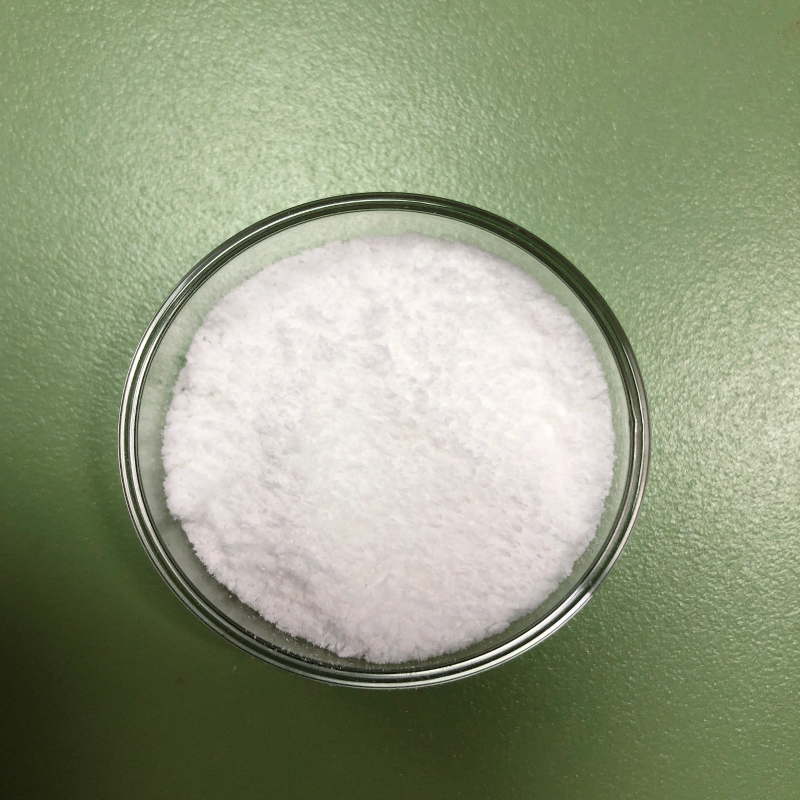Chinese scientists have spent a decade discovering the "secret" of baby fish
-
Last Update: 2021-03-09
-
Source: Internet
-
Author: User
Search more information of high quality chemicals, good prices and reliable suppliers, visit
www.echemi.com
has five toes on its hind legs, a baby-like little hand, from the Jurassic-era Chinese python, also known as the "baby fish", is the internet popular "germ", but also some businesses "money tree."
but scientists are more concerned about the fate of China's big dragonflies. After 10 years of field tracking and inspection, a team of researchers from the Kunming Institute of Zoology of the Chinese Academy of Sciences and the Center for Excellence and Innovation in animal evolution and genetic frontiers of the Chinese Academy of Sciences discovered a secret that has been hidden for millions of years. The results were published in the early hours of
22.China's big dragonfly belongs to the hermitology department, is China's unique rare wildlife, is also the world's largest existing amphibian species, the body length of up to two meters, china's big dragonfly has a very high evolutionary uniqueness, in the global animal evolution occupies an important position, known as "living fossils", considering its endangered degree, can be called "the giant panda in the water."
, China's great python was widely distributed in China's Yangtze, Yellow and Pearl River basins in 18 provinces. Since the 1950s, wild pythons have declined rapidly due to continuous habitat destruction and man-made over-capture. China's big slugs are listed as critically endangered on the Red List of Endangered Species of the World Conservation Union and are listed as secondary protected animals in China.
protection of China's big slugs has attracted great attention at home and abroad. The Chinese government attaches great importance to the protection of the Great Chinese Slug, and has invested a lot of manpower and material resources in both local protection and artificial proliferation and exile.
, however, the aquaculture market is booming, driven by huge economic benefits. Since the mid-1990s, a sexually mature baby fish has been valued at more than $10,000.
", a nest of eggs was a BMW, so a large number of wild stocks were illegally caught and bought and sold into the breeding market. "This has created a difficult situation for the protection of large geishans in China, which makes it difficult to see wild populations in the wild, but there are thousands of individuals in the farm, " said Qian Jing, a researcher at the Kunming Animal Institute of the Chinese Academy of Sciences. More
, because of the small difference in appearance, the Chinese dragonfly has long been considered a species. At present, the protection implemented in China is based on the protection measures of "China's big slug is a species" and market-oriented artificial breeding, release and proliferation, without distinguishing between the populations in different places.
years, under a series of protective measures, has the wild population of the Great Chinese Herring been restored? Has it changed? Is the current protection policy right? Beginning in 2007, Car Jing and Zhang Yaping, a member of the Chinese Academy of Sciences and vice president of the Chinese Academy of Sciences, and Robert Murphy, a Canadian amphibian reptile scientist, began the search for the ancient animal at the Kunming Zoology Institute., however, the wild dragonfly is too difficult to find, in the words of Car Jing, "reactive return is the norm." The team had been in the water at an altitude of 4,300 meters in Qumari, Qinghai, for a month, but to no avail.Using all human resources, the
team of researchers, after nearly 10 years of study and visits, finally collected 70 wild and 1034 pythons from farms nationwide, collected samples of their peeling skin and mouth scraping tissue in a non-injury manner, and conducted an in-depth study of the genetic structure of their wild and farmed populations.
didn't expect that another problem lay ahead of them. The genome of the Giant Panda is so complex that it is about 20 times the size of the giant panda genome, and the team innovatively used a method of simplifying the genome, using high-volume sequencing technology to obtain the genome level data of the dollfish.
a surprising analysis has emerged. The researchers found that china's pythons are not a single species, and current research data support the division of at least five species. And these species, which "separated" about 5 to 10 million years ago, are typical species with a long history of differentiation.
" these five species - Shaanxi, Sichuan, Guangxi, Guizhou, Anhui, distribution and water system distribution is closely related, roughly corresponding to the Yellow River, Yangtze River, Pearl River, Qiantang River and other water system basins. Car Jing said.
In addition, in the farm population, they also unexpectedly found two other unique branch, coupled with the record distribution of 4000 meters above sea level in the Qinghai-Tibet Plateau population, it is speculated that the Chinese python may include up to eight species, but this conclusion has yet to be determined by further study.
, which dates back to the Jurassic era, is described as a "living fossil" and has suddenly grown to so many species. In Zhang Yaping's view, this "I am afraid that no one thought of the important scientific discoveries, both in science and in conservation practice have great significance."this important discovery, the car is becoming more and more anxious.
"s situation may be worse than we expected. She admits, "There is a huge risk that china's big crickets have long been treated as a species." Without timely adjustment of conservation measures, not only can some species not be protected, but also small population species can easily be subjected to genetic erosion of other species, or even replaced, resulting in huge loss of genetic resources and even extinction of species.
several species in their species map do not fall within the Otsuka reserve, and because there is no accurate information on the extent of wild population distribution and population numbers for each species, scientists are unable to determine which species is more endangered.
not optimistic about farms. Their genetic analysis of 1034 samples from 34 farms in 13 provinces found that Shaanxi species were widely used as dominant species. In addition, in Guizhou Province, for example, 100 cultured individuals randomly sampled had mixed nuclear gene levels into a species, although they had different matri lineal sources.
Wei Fuwen, a member of the Chinese Academy of Sciences, believes that this achievement will not only serve as a good demonstration for advancing the research of other species, but will also help guide government departments to adopt different conservation measures for different species, and will also promote more scientific breeding in captive breeding in farms to avoid population decline caused by interbreeding.
also called for an assessment and improvement of the existing protection strategies and measures of the Chinese D.A. She suggested that the research and analysis of the genetic resources of the Chinese heron should be carried out in a comprehensive way to correctly understand each species. Especially for small population species, priority protection is urgently needed. At the same time, we should strengthen the application of genetic technology, establish technical standards for different species, and regulate the breeding market. Disorderly release is prohibited, and on the basis of genetic identification, breeding and release of the origin of each species can only be carried out.
"China's big dragonflies have been through hundreds of millions of years of big waves, is nature for our human remains the 'elf creatures'." It is hoped that we humans will live in peace with them so that one day they can return to the great rivers rather than living in human-run pools. Car Jing finally said. (Source: Ding Jia, China Science Daily)
This article is an English version of an article which is originally in the Chinese language on echemi.com and is provided for information purposes only.
This website makes no representation or warranty of any kind, either expressed or implied, as to the accuracy, completeness ownership or reliability of
the article or any translations thereof. If you have any concerns or complaints relating to the article, please send an email, providing a detailed
description of the concern or complaint, to
service@echemi.com. A staff member will contact you within 5 working days. Once verified, infringing content
will be removed immediately.







